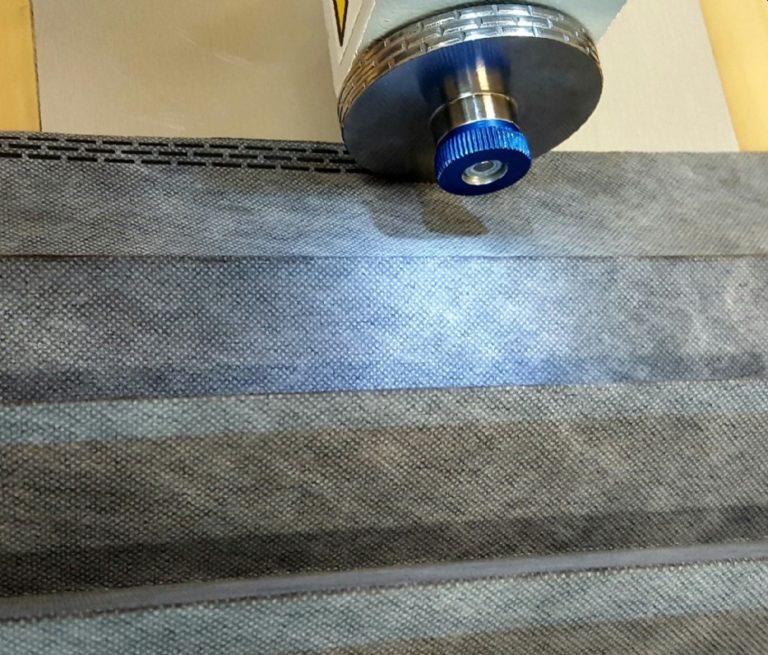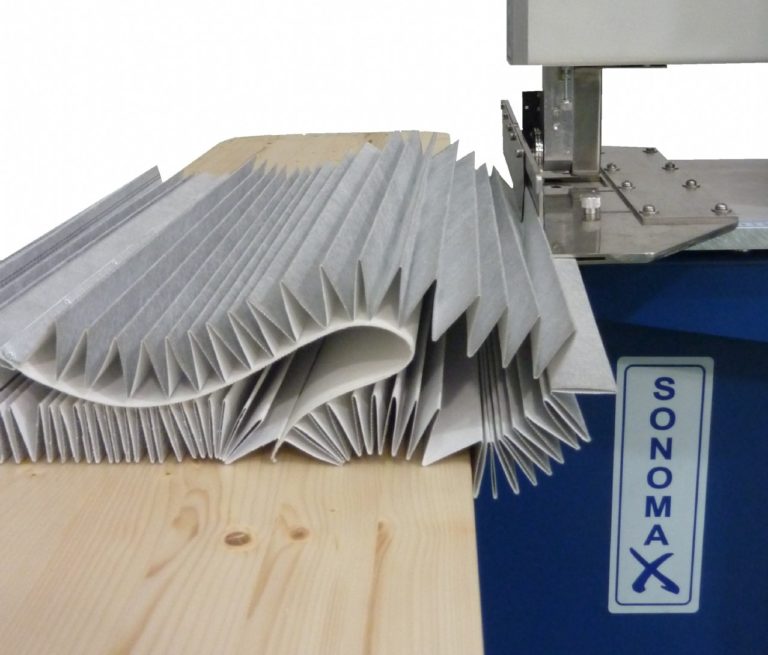The ultrasonic welding of thermoplastics for filtration applications is one of the most reliable, clean and efficient solutions in the industrial filters and medical devices. This technology allows for robust and contamination-free joints, ensuring consistent performance even under extreme conditions. Sonomax Srl, with over 20 years of experience, is a reference point in Italy and Europe for the supply of ultrasonic welders dedicated to this area.
What is ultrasonic welding applied to filtration
The ultrasonic welding is a joining process that utilises high-frequency vibrations (usually between 20 kHz and 40 kHz) to locally fuse thermoplastic materials. In applications of filtrationThis technology is used to assemble filter membranes, plastic frames, support rings and other components, with high precision and repeatability.
This technique is particularly suitable for synthetic materials such as polypropylene (PP), polyester (PET), nylon (PA) e polyethylene (PE)widely used in the production of filters for air, water, industrial liquids, HEPA/ULPA filters, filters for FFP2/FFP3 masks, filters for the automotive industry e pharmaceutical sectors.
How the ultrasonic welding process works
The operating principle is based on the conversion of electrical energy into mechanical vibrations via a piezoelectric transducerconnected to a sonotrode which applies energy to the area to be welded. The friction generated at the molecular level locally melts the thermoplastic materials, which come together solidly without the addition of glues or solvents.
The welding cycle takes only a few tenths of a second and guarantees a tight, clean and mechanically resistant joint. The process accuracy is particularly important in the filter area, where micro-cracks could compromise the performance of the finished product.
Advantages over other methods
Ultrasonic welding offers numerous advantages over other joining technologies such as bonding, heat sealing or laser welding:
- No use of consumablesNo adhesives, solvents or fasteners are required.
- Rapid processwelding times of less than one second.
- High repeatability and quality control.
- Absence of contaminationessential for medical or food applications.
- Reduced operating costs in the medium to long term.
- Automatabilityeasy integration into automated or robotised production lines.
Industrial applications in the filtration sector
Ultrasonic welding is widely used in the production of:
- Air and gas filters: surgical masks, HEPA and ULPA filters, filters for HVAC systems.
- Automotive filtersfuel, oil, air, urea.
- Drinking water filters: filter cartridges, osmotic membranes.
- Medical and diagnostic filtersdisposable devices, sterile elements, filter cassettes.
- Industrial filtersdust collectors, bag filters, drum filters.
In all these cases, the welding quality is a determining factor in the durability and reliability of the product.
Technical requirements: machines, frequencies and powers
Le ultrasonic welding machines used in this sector must guarantee:
- Operating frequenciestypically 20 kHz, 30 kHz or 35 kHz, depending on the thickness and delicacy of the materials.
- Available powerfrom 500 W up to 3,000 W for more demanding applications.
- Digital control of the welding cycle (time, power, amplitude, force applied).
- Parameter Programming via HMI or PLC interfaces.
- Compatibility with automations and vision systems for quality control.
Le Sonomax ultrasonic welders for filtration meet all these requirements, offering modular configurations, bench-top versions and systems that can be integrated into automatic lines.
Sonomax Srl's approach to the filtration sector
Sonomax Srl stands out for its approach technical and consultancyable to accompany the customer from the choice of technology to thecustomised integration in the production line. Each project is evaluated according to the specific requirements of the filter to be welded, with application tests on samples, leak tests and pre-industrial validations.
Thanks to a comprehensive catalogue of ultrasonic generators, transducers, customised sonotrodes e over-the-counter or automatic systemsSonomax is able to cover the needs of SMEs and large industrial groups throughout Europe.
Frequently asked questions (FAQ)
Which filter materials can be welded with ultrasound?
The most common are polypropylene (PP), polyester (PET), nylon (PA), polyethylene (PE), non-woven fabrics (TNT) and thermoplastic composites.
Is it possible to weld small components?
How long is the welding cycle?
Usually less than a second, varying according to thickness, surface and type of material.
Is the weld resistant to water or fluids?
Can I automate the process?
To learn more about the technical specifications of Sonomax ultrasonic welders, visit the section Welders or contact us for a free test on your filter material.


